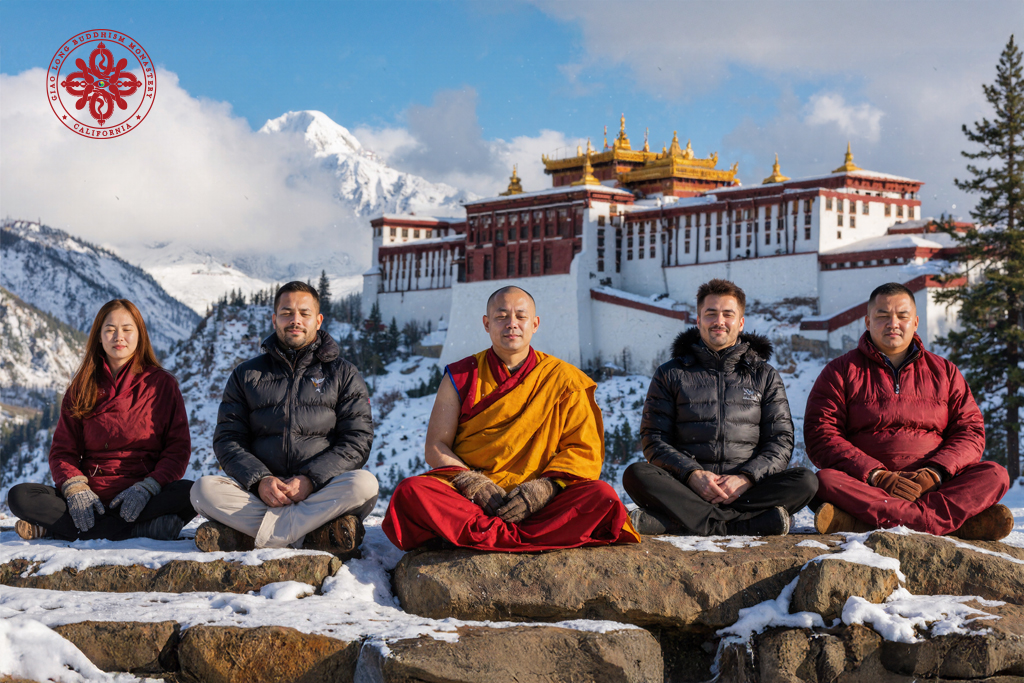At Giao Long Monastery, full-time participants live within the monastery grounds, sharing a simple monastic lifestyle: wake-up at dawn, communal chanting, ritual prayers, meals taken together, and disciplined meditation sittings. The environment is intentionally structured to integrate daily life with Dharma practice. Drawing on the model of Tibetan shedra (monastic colleges) which emphasise memorisation, debate and deep reflection, the Monastery’s curriculum offers both intellectual and contemplative training
Snacks, lodging and study materials are provided through the Monastery community. As part of the community mission, tuition and direct academic fees are waived, allowing students to devote their time exclusively to study and practice.
The academic portion mirrors the rigorous tradition of Tibetan Buddhist monastic education. Students engage in:
Foundational language training (Tibetan, possibly Sanskrit) to access original source materials.
Study of Buddhist philosophical treatises: e.g., logic/pramāṇa, Abhidharma, Prajñāpāramitā, Madhyamaka, and Vinaya (monastic discipline).
Memorisation of root texts followed by commentary lectures and then dialectical debate to clarify understanding.
Daily guided meditation and ritual practice integrated with the curriculum to nurture insight, not just academic knowledge.
Giao Long structures its program for full-time immersion, including: BA/MA/PhD frameworks; in the purely monastic context the equivalent qualifications might be Geshe, Khenpo or Acharya. Participants at Giao Long may therefore progress into advanced studies, translation work, or monastic teaching roles.
Access to books, library, debate courtyard, and residential community life ensures that academic depth is matched by lived discipline.

Certificate
BA in Buddhist Studies and Himalayan Languages (Acharya)
MA in Buddhist Studies (Khenpo)
PhD in Buddhist Philosophy (Geshe)
Applicants to Giao Long’s full-time program commit to a multi-year trajectory of study and practice. They must demonstrate sincere motivation for both scholarly inquiry and ethical/residential discipline. The community ethos emphasises non-discrimination: students from any nationality, ethnic background, or financial means are welcome. In line with the historical monastic ideal, no student is turned away for lack of funds.
Once admitted, students participate fully in the monastery’s schedule, which is designed to integrate study, service and spiritual life. The “free tuition” model is sustained by supporters and the community’s dedication to offering learning as a gift.
Deep immersion: living and learning in one integrated setting accelerates the internalisation of Dharma and scholastic discipline.
Holistic formation: not just intellectual knowledge, but character, ethic, wisdom and service.
Financial freedom: because tuition is waived, students can focus entirely on the path without worry of fees.
Connection with lineage: the curriculum is modelled on classical Tibetan monastic university systems, ensuring authenticity and rigor.
Life in the monastery demands commitment: early rising, communal rules, simple living, contemplation, and study. Students should be prepared for disciplined schedules, and adapt to communal living and service. The Monastery will provide orientation, mentors, and communal support to help new participants settle.
Applications open annually; selection involves motivation statement, interview, and sometimes probation period. Accommodation and meals are provided as part of the community offering.
LAM KY
LAM KY
LAM KY